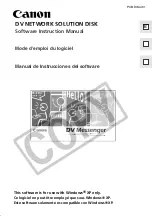
Configuring LLDP
Page 190
LLDP MED Power over Ethernet
The port PoE information.
•
Power Type
— Indicates the power type advertised on the port.
•
Power Source
— Indicates the power source advertised on the port.
•
Power Priority
— Indicates the port’s power priority advertised on the port.
•
Power Value
— Indicates the port’s power value, in Watts advertised on the port.
Inventory
•
Hardware Revision
— Displays the hardware version number.
•
Firmware Revision
— Displays the firmware version number.
•
Software Revision
—Displays the software version number.
•
Serial Number
— Displays the device serial number.
•
Model Name
— Displays the device model name.
•
Asset ID
— Displays the device asset ID.
LLDP MED Network Policy
•
Application Types
— Indicates the port’s LLDP Network Policy for each of the following:
–
Voice
–
Voice Signaling
–
Guest VLAN
–
Guest VLAN Signaling
–
Softphone Voice
–
Video Conferencing
–
Streaming Video
–
Video Signaling
•
Flags
— Displays the VLAN tagging status for the application type. The possible field values are:
–
Tagged
— The packets are tagged.
–
Untagged
— The packets are not tagged.
•
VLAN ID
— Displays the VLAN ID attached to the LLDP-MED network policy.
•
User Priority
— Displays the User Priority attached to the LLDP-MED network policy.
•
DSCP
— Displays the DSCP value attached to the LLDP-MED network policy. The possible field value is
0-63.
LLDP MED Location
•
Location Type
— The port’s advertised LLDP-MED location of the following:
–
Coordinates
— Displays the device’s location map coordinates.
–
Civic Address
— Displays the device’s civic or street address location, for example 414 23rd Ave E. The
possible field value are 6 - 160 bytes.
–
ECS ELIN
— Displays the device’s ECS ELIN location. The field range is 10 - 25 bytes.
•
Location Address
— The location as described.
3.
Select the port for which you want to see the LLDP MED neighbors information details.
















































